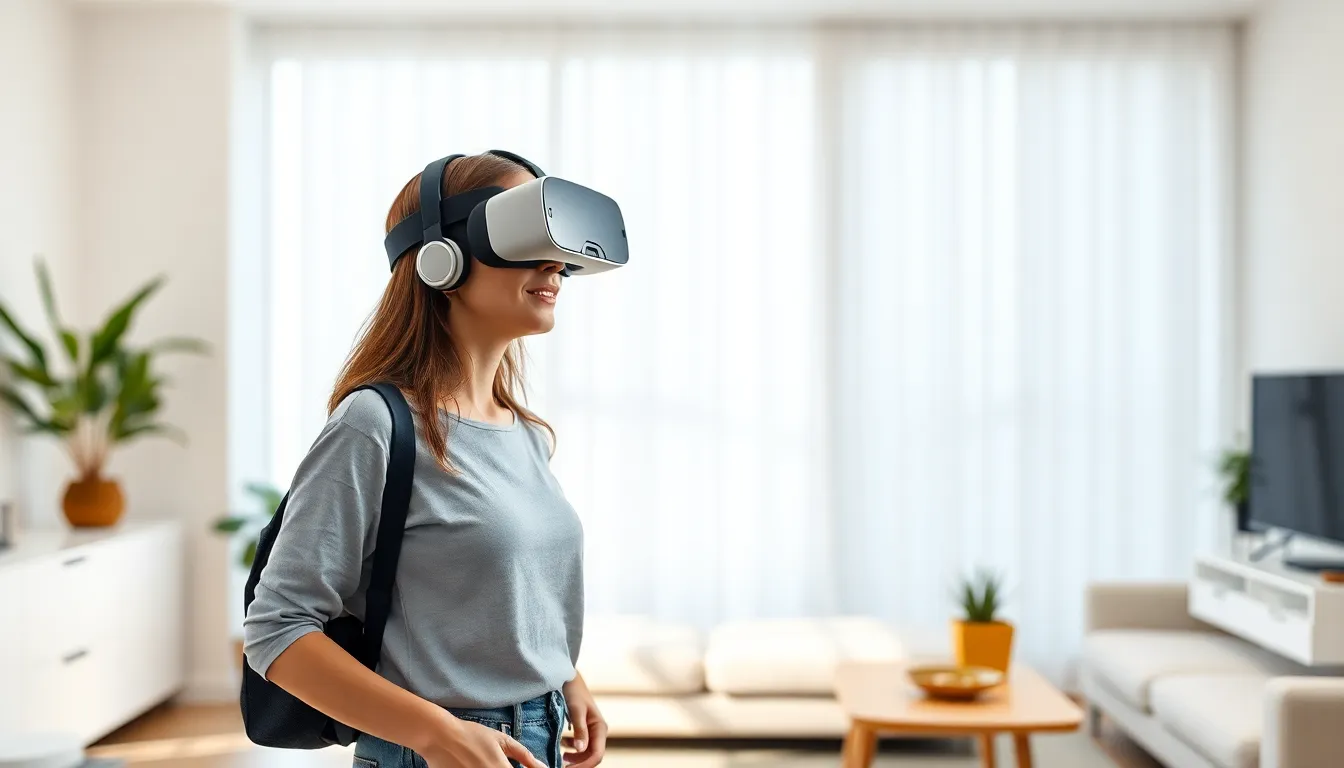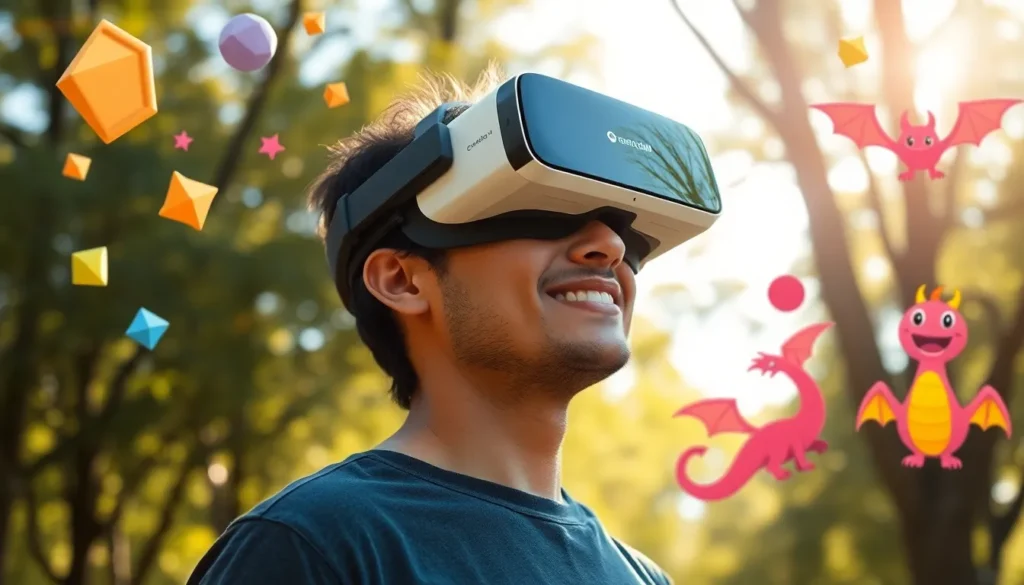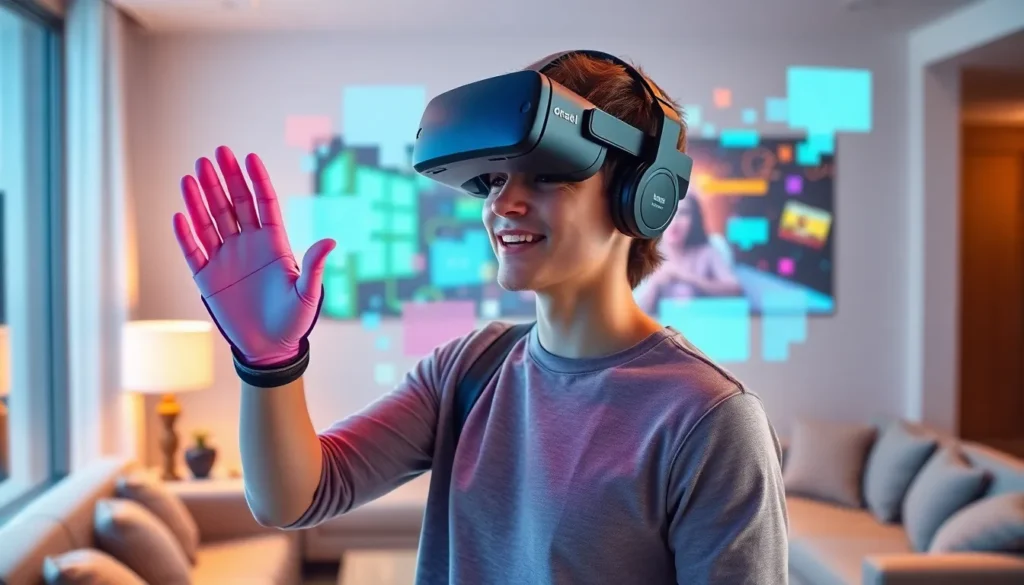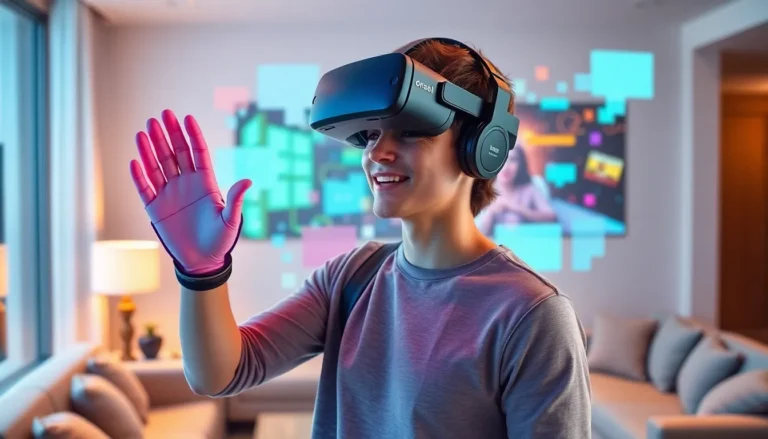Table of Contents
ToggleImagine slipping on a headset and instantly being whisked away to a world where gravity doesn’t exist and dragons are your new best friends. Welcome to the realm of portable VR, where adventure fits in your backpack. Gone are the days of being tethered to bulky equipment; now, immersive experiences can follow you anywhere, from your living room to the great outdoors.
Overview of Portable VR
Portable virtual reality (VR) delivers unique experiences that appeal to a diverse audience. Users enjoy the ability to engage with immersive environments without being tethered to traditional setups. This technology allows participation in adventures that span from exploring distant planets to battling mythical creatures.
Many devices now offer portability, making VR accessible anywhere. Headsets like the Oculus Quest and the HTC Vive Flow exemplify lightweight design and high performance. These advances ensure that users can swiftly transition from one location to another, maintaining the essence of their experiences.
Optimal user experience hinges on several factors. Battery life typically ranges from 2 to 3 hours on most portable headsets, impacting longer sessions. Display technology also matters; many offer resolutions near 2K per eye, enhancing visual depth and clarity. Sound quality is often integrated with spatial audio, providing a sense of presence.
Gaming and educational applications thrive within this portable framework. Developers design games tailored specifically for these platforms, maximizing interaction and engagement. In educational settings, portable VR allows users to participate in simulations that would be impossible in real life, such as dissecting a virtual frog or exploring ancient civilizations.
As the technology matures, potential expands significantly. Increased processing power and improved ergonomic designs promise to redefine how users interact with VR. Companies continue to invest in research, pushing boundaries while enhancing portability and usability in the VR landscape.
Key Features of Portable VR

Portable VR offers a range of essential features that enhance user immersion and flexibility. These key aspects ensure that users enjoy seamless experiences wherever they are.
Wireless Connectivity
Wireless connectivity is a fundamental feature for portable VR devices. This technology eliminates the constraints of cables, allowing users to move freely within their virtual environments. Bluetooth and Wi-Fi capabilities enable quick connections to various devices, enhancing compatibility. Many portable VR headsets provide low-latency connections, which contribute to smooth gameplay and reduce lag. For instance, devices like the Oculus Quest utilize advanced wireless technology, ensuring an uninterrupted experience. Users benefit from the ability to download games and updates directly to their headsets without needing a computer.
Lightweight Design
Lightweight design significantly contributes to the comfort of portable VR experiences. Manufacturers prioritize creating headsets that minimize bulk and enhance wearability. Most devices weigh less than one pound, ensuring they can be worn for extended periods without discomfort. This design consideration allows users to engage fully in immersive experiences without feeling fatigued. Ergonomic features, such as adjustable straps and padded interiors, improve fit and user satisfaction. For example, the HTC Vive Flow achieves portability with a compact design suited for easy transport and storage. As a result, users can enjoy virtual adventures anytime and anywhere.
Popular Portable VR Headsets
Portable VR headsets make immersive experiences accessible anywhere, catering to varying preferences and needs. Two prominent examples shine in this space.
Oculus Quest 2
Oculus Quest 2 stands out for its wireless functionality and ease of use. Users enjoy a high-resolution display with a resolution of 1832 x 1920 pixels per eye. Battery life lasts up to 2 to 3 hours, perfect for extended gaming sessions. It features built-in audio, removing the need for extra accessories. Developers support a wide range of games and applications, enhancing user engagement. Price-wise, its affordability appeals to both casual users and serious gamers, solidifying its popularity in the portable VR market.
Pico Neo 3
Pico Neo 3 excels in delivering high-quality visuals and powerful performance. Offering a resolution of 3664 x 1920 pixels per eye, it ensures stunning clarity in virtual environments. Compatibility with various content platforms broadens its appeal to diverse users. The headset features a comfortable design, with adjustable straps enhancing fit and usability. Battery life remains competitive, providing around 3 hours of active use. Its ability to support both standalone and tethered experiences caters to users seeking versatility. Overall, Pico Neo 3 provides a compelling option in the portable VR landscape.
Use Cases for Portable VR
Portable VR offers users versatile applications, making it an integral part of gaming and education.
Gaming Experiences
Gaming with portable VR provides immersive adventures that captivate users. High-quality graphics and responsive controls enhance interaction within digital worlds. Platforms feature a variety of genres, from action-packed shooters to relaxing puzzle games. Oculus Quest 2 and Pico Neo 3 deliver these experiences seamlessly. Multiplayer options encourage social interaction, whether players team up or compete. This flexibility allows gamers to enjoy titles solo or connect with friends anytime, anywhere. Developers continue to innovate, creating dynamic content tailored for portable setups.
Educational Applications
Portable VR transforms education by delivering interactive learning opportunities. Students engage deeply with subjects through simulations and virtual field trips. History lessons become vivid as learners explore ancient cities, while science classes allow for virtual lab experiments. Educators utilize these platforms to enhance retention and comprehension. Accessibility to educational resources expands when devices are lightweight and easy to transport. Benefits include fostering creativity and collaboration among peers. Institutions increasingly adopt portable VR to revolutionize traditional teaching methods.
Challenges and Limitations
Portable VR faces several challenges that can impact user experience. These issues include battery life and display quality, which play crucial roles in the overall performance of VR devices.
Battery Life Concerns
Battery life remains a significant concern for portable VR systems. Many headsets achieve approximately 2 to 3 hours of active usage, limiting extended gameplay and experiences. Users often seek longer sessions, especially during immersive gameplay or educational simulations. Quick charging solutions exist, yet they don’t entirely resolve the inconvenience of downtime. Manufacturers must prioritize improving battery technology to enhance usability and overall satisfaction.
Display Quality Issues
Display quality significantly affects the immersion level in portable VR. Although devices like the Oculus Quest 2 and Pico Neo 3 provide high resolutions, screen-door effects can detract from the experience. Users may notice pixelation or blurring when engaging with fast-moving content. Furthermore, color accuracy and refresh rates can vary across devices, influencing visual fidelity. Addressing these display quality issues is essential for providing a captivating and seamless VR experience.
Portable VR is paving the way for a new era of immersive experiences. With its lightweight design and wireless capabilities users can dive into fantastical worlds wherever they go. The advancements in technology are making these devices more accessible and enjoyable for everyone from gamers to educators.
As manufacturers continue to improve battery life and display quality the potential for portable VR will only grow. This evolution promises to enhance user engagement and redefine how people interact with virtual environments. The future of portable VR looks bright and exciting inviting users to explore limitless possibilities in their everyday lives.







